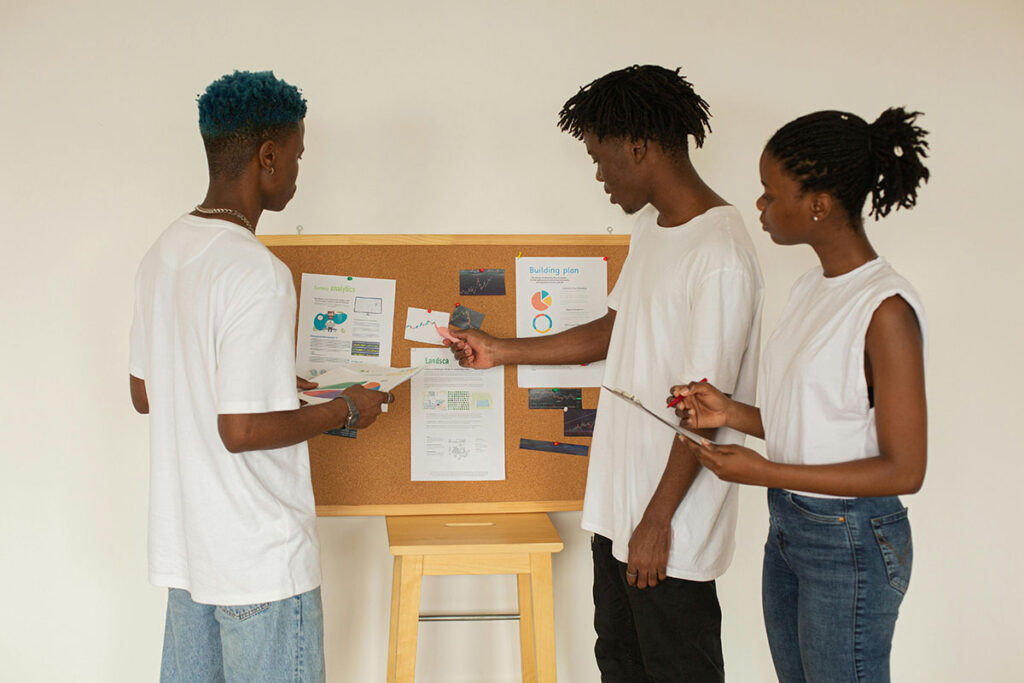Students investigate how to bring together different types of knowledge to make a case for environmental justice at a California school of their choice. Students learn that environmental injustices are deeply complex, interdisciplinary problems that require several different types of knowledge and expertise to effectively understand and address. Students investigate how to integrate different types of knowledge and evidence — such as ecological, historical, quantitative, qualitative, and moral — to make a case for an environmental solution. Students see this in action via a case study on dams on the Klamath River and the types of knowledge that led to their removal.
Students explore where to find data and information on environmental hazards in their case study location and what to do when information is conflicting. They examine how different groups and parties are affected, identifying factors that influence how those groups respond and considering other injustices. The unit culminates with students bringing different types of knowledge and evidence together to present a case study and plan for action.

“From my students: ‘Thank you for teaching us this lesson because if you didn’t it would be bad for our environment.’ ‘This was awesome! Can you do more? Thank you!’ ‘Thank you for helping us in taking care of the environment.'”
“My students often refer to the experience and knowledge gained. I plan to use Seeds to Solutions lessons in the future.”
“This did a great job of piquing students’ interest and sparking opposing points of view, which created lively discussions on the topic.”
“WOW! What incredible and engaging lessons to do with my students. They loved this opportunity to be scientists, explore and think about the food they eat, and I loved the ways that they began to model. I am so excited about these lessons and cannot wait to share them with my coworkers.”
“Students really enjoyed the hands-on activity. They were very interested to learn about the different pollutants that they’ve never heard of. It also developed their curiosity about air quality and pollution. It was an eye-opener for some that they are able to see what is mostly ‘unseen’ by everyone.”
“I heard comments like, ‘I didn’t realize how much climate change affects my community,’ and, ‘This project made me think about what I can do to help.'”
“What I find interesting is that students are discussing the material outside of class time. I heard students discussing the ideas before class in the hallways and even during lunch periods.”
“Students really wanted to share their food traditions and look into how climate change might affect their food traditions.”
“Every lesson was so thoroughly designed, the case study design book was beautifully organized, and it helped to give my class a real-life understanding of how college/graduate-level academic research works. Being able to connect their research back to environmental issues they actually experience was simply icing on the cake. Well done!”
“Using the maps and seeing things like schools and how close they are to hazards is really cool. They may not be super connected personally, but they can put themselves in the shoes of other kids and try to relate. I know it’s working because I have a kid that just watches Netflix all day, every day and he pulled out his earbud and participated!”
“The kids become more engaged because now they are actually actively doing things. They’re really having to look for themselves. It’s not given to them on a platter, but all the resources are right there.”
“I am so amazed and impressed by the depth of resources that you embedded in the teacher guide. This is really well put together.”

Kim Fortun, EcoGovLab, UC Irvine
Margaret Tebbe, EcoGovLab, UC Irvine
Prerna Srigyan, EcoGovLab, UC Irvine
Nadine Tanio, EcoGovLab, UC Irvine
Margaux Fisher, EcoGovLab, UC Irvine
Katie Vo, EcoGovLab, UC Irvine
Taranjot Bhari, EcoGovLab, UC Irvine
Aeris Melody Johnson, EcoGovLab, UC Irvine
Lena Fortun, EcoGovLab, UC Irvine
Sierra Howard, EcoGovLab, UC Irvine
Julia Lin, EcoGovLab, UC Irvine
Jennifer Janzen, WestEd
Maria Simani, CA Science Project
Matt Ellinger, Designer
Hosun Kang, UC Irvine
K. Lily Wu, OEHHA and Cal EPA
Wongyong Park, University of Southampton
Doron Zinger, CSU Dominguez Hills
Jean Flanagan, BSCS
Susan Lyons, Development Editor
Stacey Lane, Illustrator
Darin Newton, Development Editor
Erica Brauer, Granada Hills Charter
Shannan Johnson, Windsor USD
Graham Lockett, Culver City USD
Craig Manges, Lemoore UHSD
Kate Morris, The Waverly School
Laura Rivera, Torrance UUSD
You’ll get news on Seeds to Solutions and environmental literacy from Ten Strands
"*" indicates required fields
© 2025 San Mateo County Office of Education and Ten Strands | Terms of Use | Privacy Policy